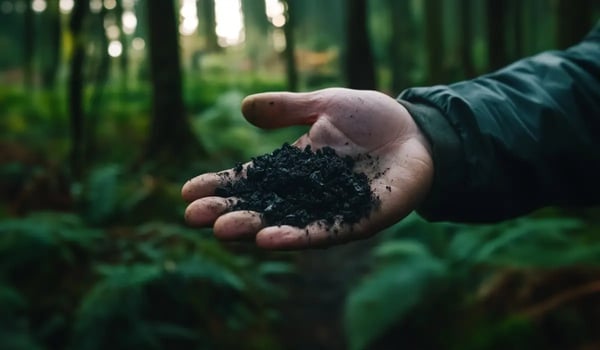In a landmark move that could redefine the future of emissions trading, the UK government has...
Microsoft Doubles Down on Carbon Removal with Record-Setting Deals
In a bold leap toward its goal of becoming carbon negative by 2030, Microsoft has unveiled a trio of high-impact carbon removal agreements that collectively total over 11.8 million tonnes of carbon dioxide (CO₂) removal. Spanning industrial capture, BECCS, and reforestation, these deals reinforce the tech giant’s leadership in environmental innovation and mark a defining moment in the scale-up of engineered carbon removal solutions.
 Wide shot of a reforestation project in Appalachia, with locals planting trees and gathering data using a drone. AI generated picture.
Wide shot of a reforestation project in Appalachia, with locals planting trees and gathering data using a drone. AI generated picture.
One of Microsoft’s standout agreements is a 12-year deal with CO280, a carbon removal company that retrofits pulp and paper mills in the United States. Using existing infrastructure, the project will capture emissions from mill recovery boilers and store the CO₂ permanently underground.
This initiative will prevent 3.7 million tonnes of CO₂ from entering the atmosphere and relies on technology developed by SLB Capturi, a joint venture of SLB and Aker Carbon Capture. Located along the U.S. Gulf Coast, the project is an example of how industrial assets can be rapidly transformed into environmental tools.
CO280 emphasises that the project’s financial stability is tied to long-term CDR offtake agreements—such as the one with Microsoft—which de-risk large-scale carbon initiatives.
Microsoft has also made a major commitment to bioenergy with carbon capture and storage (BECCS), signing a $800 million, 15-year deal with AtmosClear, a Fidelis portfolio company. Scheduled to begin construction in 2026 at the Port of Greater Baton Rouge, Louisiana, the BECCS facility will use waste biomass like sugarcane remnants to generate energy while capturing and sequestering CO₂.
Once operational in 2029, the plant will remove 6.75 million tonnes of CO₂ and create hundreds of new jobs in a region hit hard by industrial decline.
‘This contract with Microsoft marks a transformative moment for the high-quality, engineered carbon removal market,’ said Daniel J. Shapiro, CEO of Fidelis.
Rounding out Microsoft’s trio of deals is a large-scale reforestation project with Living Carbon, a San Francisco-based biotech firm. The company will generate over 1.4 million CDR credits by restoring 25,000 acres of former coal mining sites in Appalachia.
Living Carbon uses photosynthesis-enhanced trees—such as a hybrid poplar engineered to absorb significantly more CO₂—under the verification framework of Isometric’s Reforestation Protocol. The approach blends nature with data-driven precision, incorporating remote sensing and lifecycle analysis for transparency and scientific rigor.
‘In addition to delivering measurable and highly additional carbon removal, Living Carbon’s restoration activities also produce a range of co-benefits…,’ said Brian Marrs, Microsoft’s Senior Director of Energy & Carbon Removal.
With these new deals, Microsoft has secured the largest carbon removal portfolio of any private company in 2024. Its shift from traditional offsets to science-backed, permanent removal reflects a growing consensus: engineered solutions are essential to meet the world’s net-zero targets.
As global emissions continue to rise, experts say removing up to 10 billion tonnes of CO₂ per year by 2050 is critical. Microsoft’s actions may accelerate progress—both in market maturity and in the availability of credible, scalable removal methods.






